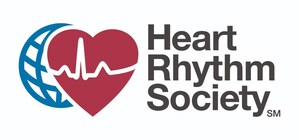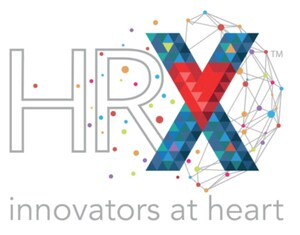One In Four Older Adults Have Never Heard Of Atrial Fibrillation Yet Remain At Highest Risk For The Heart Rhythm Disorder
Heart Rhythm Society's Second Annual "A-Fib Feels Like" Campaign Educates Americans on How to Recognize Warning Signs of Atrial Fibrillation
WASHINGTON, Sept. 6, 2012 /PRNewswire/ -- Adults over the age of 60 are at the greatest risk of atrial fibrillation (AF), a potentially life-threatening heart rhythm disorder. Yet, according to a recent survey conducted by the Heart Rhythm Society (HRS), more than 25 percent of Americans between the ages of 55 and 64 have never heard of AF. Today marks the kick-off of HRS' second annual "A-Fib Feels Like" campaign to help educate Americans about the symptoms and warning signs associated with AF and encourage those who suffer from the disorder to talk to their doctors about their risks and potential treatment options.
To view the multimedia assets, please click: http://www.multivu.com/mnr/57735-a-fib-feels-like-campaign-warning-signs-atrial-fibrillation
(Photo: http://photos.prnewswire.com/prnh/20120906/MM67569 )
AF is characterized by a rapid and irregular heartbeat caused when the top chambers of the heart (the atria) quiver (fibrillate) erratically, at rates faster than 300 times per minute. The condition can cause heart palpitations and severely depreciate an individual's quality of life. The most common causes and risk factors include being older than 60 years of age, hypertension, diabetes, heart problems, thyroid disease, chronic lung disease, sleep apnea, excessive alcohol or stimulant use, serious illness or infection.
"With the aging of the 'baby boomers' it is now more important than ever to increase public health awareness of common heart health issues that are prominent in our older adult population," said Anne M. Gillis, MD, FHRS, president of the Heart Rhythm Society. "Through our awareness campaigns, HRS strives to educate the public particularly those who might be at risk of serious heart health issues. Keep in mind that AF can affect people of any age, and if you have symptoms suggestive of AF or are diagnosed with AF, having regular, informed conversations with your doctor will help ensure the appropriate investigations and determine the right treatment options if needed."
Currently, AF accounts for approximately one-third of hospitalizations for cardiac rhythm disturbances in the United States (U.S.). One in four adults over the age of 40 will develop AF in their lifetime[1] and between three and five percent of people over age 65 live with AF. It is expected that by 2030, the number of people over age 65 is to become 19 percent of the total U.S. population[2], an increase from 13 percent in 2010[3]. As the general population ages, the number of people living with AF will continue to grow.
As part of this year's campaign, HRS is working to increase public knowledge about AF and encourages Americans to take the following steps to better heart health:
The "A-Fib Five" – 5 Tips to Get Smart About Atrial Fibrillation:
- Recognize the Symptoms: What a-fib feels like in your chest? Irregular heartbeat, fish flopping, thunder rumbling, drums beating...view this Public Service Announcement to learn more: http://www.hrsonline.org/News/AF-awareness/af_psa.cfm.
- Know the Risks: Overall health plays a big role in determining your risk for AF. Do you have high blood pressure, diabetes, heart problems, thyroid disease, chronic lung disease, sleep apnea or drink excessive alcohol? Visit www.MyAfib.org for more information about AF.
- Talk to your Doctor: If you or a loved one have risk factors and develop symptoms associated with AF, it is important to talk about the condition. Make time to talk to your doctor or loved one about the symptoms.
- Connect the Dots: Knowing your family medical history is critical. Understanding your individual risk factors for all cardiovascular related conditions will help you have a more informed conversation with your doctor.
- Learn about Heart Rhythm Specialists: Be familiar with how electrophysiologists (EPs) can help. EPs are cardiologists who have additional education and training in the diagnosis and treatment of abnormal heart rhythms. Go the www.hrsonline.org to learn more about EPs.
"Heart rhythm conditions affect millions of Americans every day and awareness is the first, and most important, step in ensuring that patients receive the treatment they need to lead long and healthy lives," said John Smith, M.D. Ph.D., Senior Vice President for Clinical Development and Medical Affairs, Boehringer Ingelheim Pharmaceuticals Inc. "We are proud to support HRS in its efforts to empower Americans during Atrial Fibrillation Awareness Month."
For more information about the Heart Rhythm Society and the AF Awareness Campaign, please visit, www.hrsonline.org.
About the Heart Rhythm Society
The Heart Rhythm Society is the international leader in science, education and advocacy for cardiac arrhythmia professionals and patients, and the primary information resource on heart rhythm disorders. Its mission is to improve the care of patients by promoting research, education and optimal health care policies and standards. Incorporated in 1979 and based in Washington, DC, it has a membership of more than 5,600 heart rhythm professionals in more than 70 countries around the world. www.hrsonline.org.
[1] Lloyd-Jones DM, Wang TJ, Leip EP, et al. Lifetime risk for development of atrial fibrillation: the Framingham Heart Study. Circulation 2004; 110:1042-6.
[2] Department of Health & Human Services, Administration on Aging – Aging Statistics http://www.aoa.gov/aoaroot/aging_statistics/index.aspx
[3] United States Census 2012, http://www.census.gov/prod/cen2010/briefs/c2010br-09.pdf
Contact: Kennesha Baldwin
(202) 464-3476
[email protected]
Cindy Rahman
(703) 739-8342
[email protected]
SOURCE Heart Rhythm Society
WANT YOUR COMPANY'S NEWS FEATURED ON PRNEWSWIRE.COM?
Newsrooms &
Influencers
Digital Media
Outlets
Journalists
Opted In





Share this article